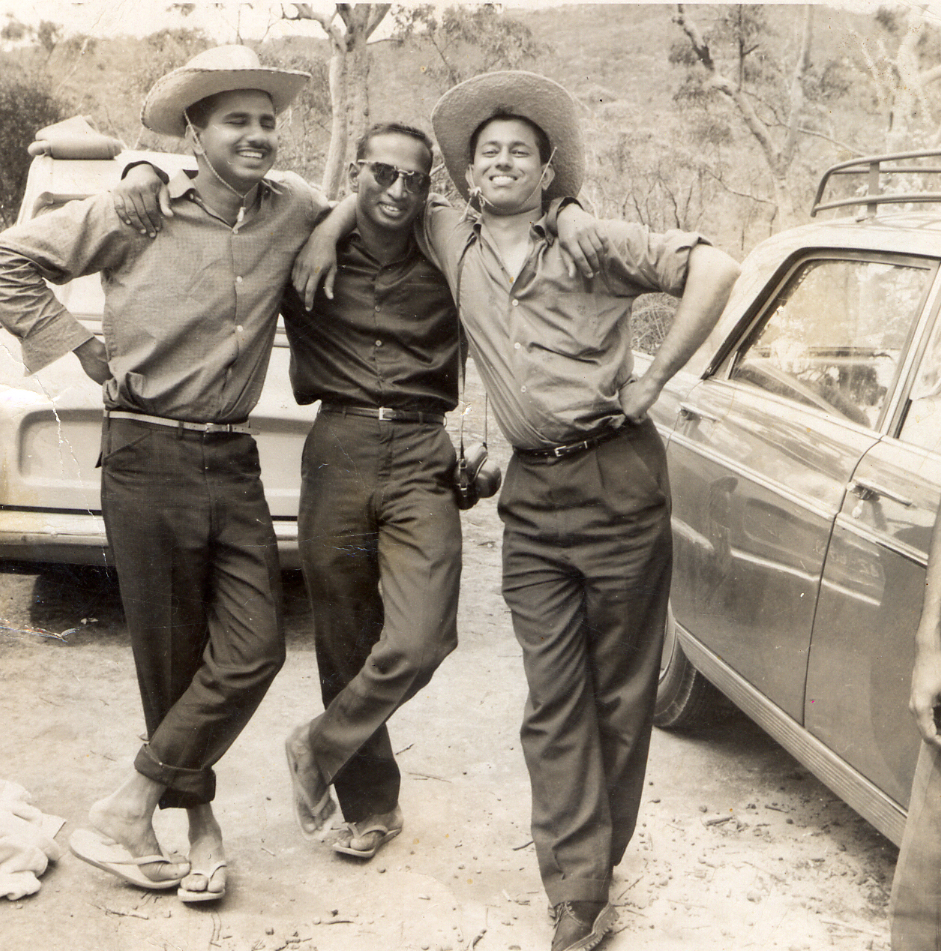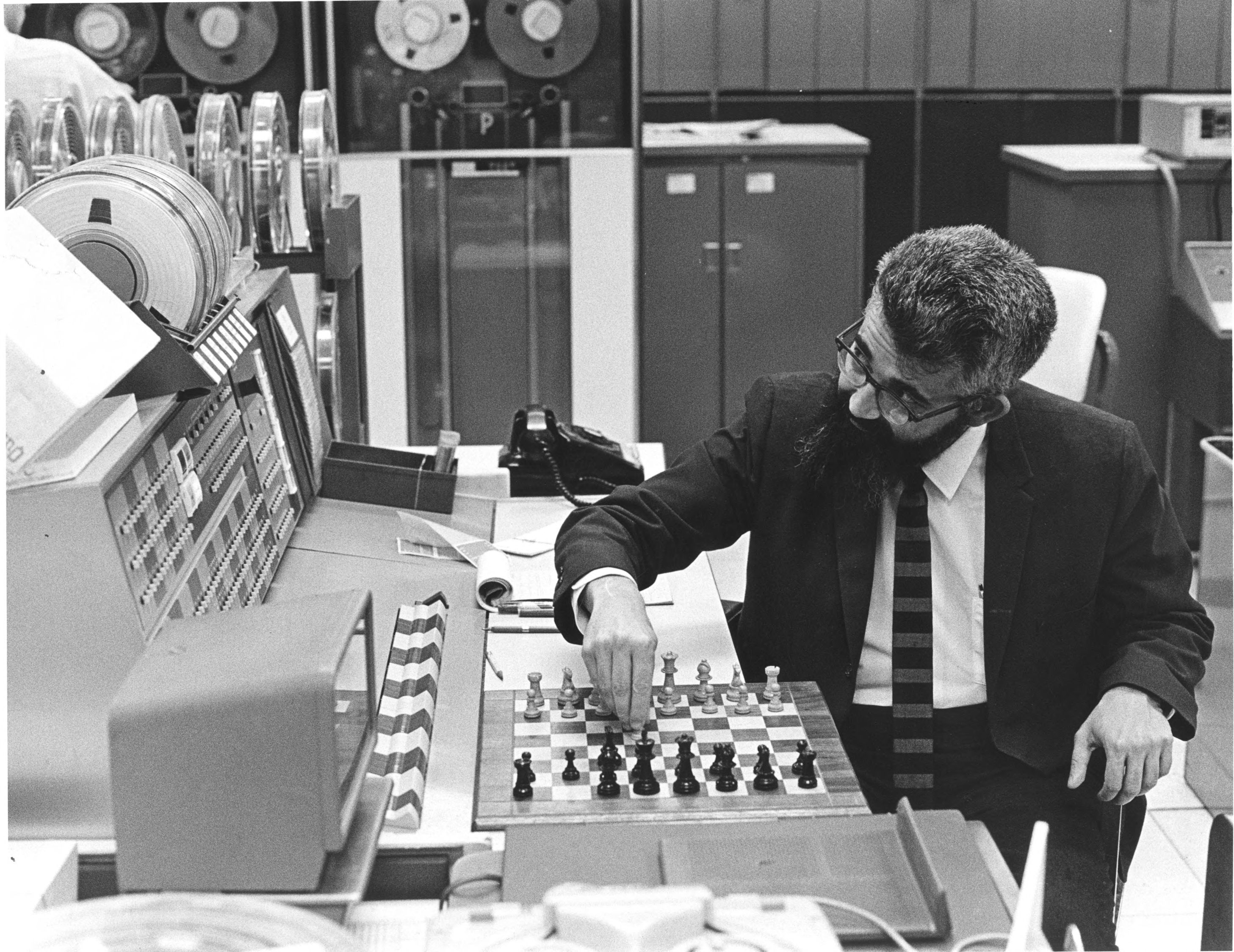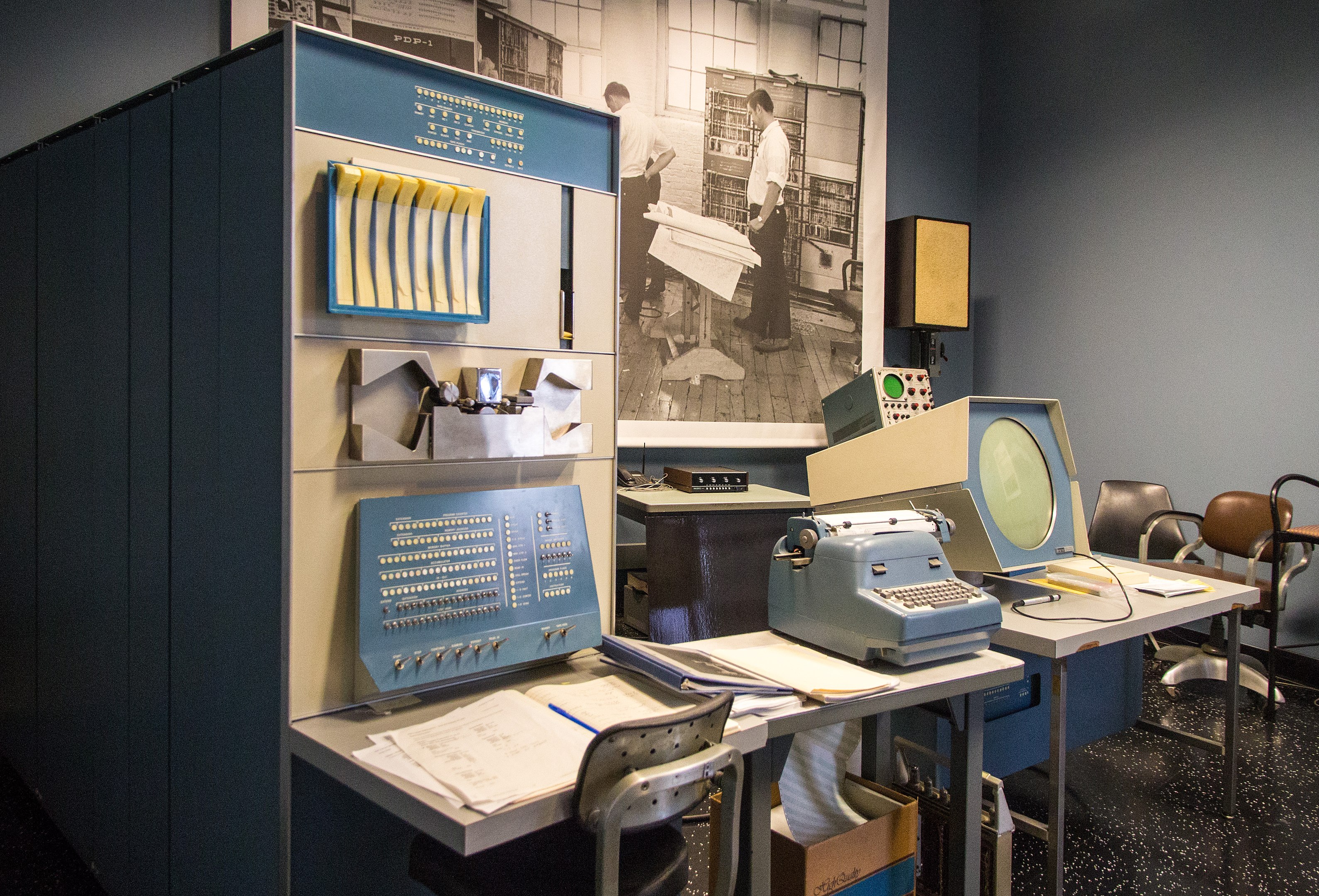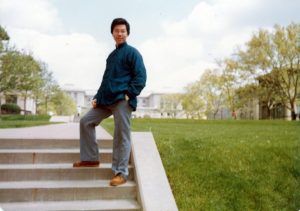
Do you control your phone with voice commands? Did you know your car was built by dozens of robots? Have you read books online for free? For over five-decades, Raj Reddy and his students established the foundations for these technologies: speech recognition, computer vision, autonomous robotic systems, and universal access to information.
In the early 1960s, as a recent graduate student, CHM Fellow Raj Reddy became intrigued by the predictions of early AI pioneers, namely that computers would beat a world chess champion in just 10 years. The idea that machines could one day do what was considered intelligent human behavior captured Raj's imagination. It also marked the beginning of Raj’s prescient vision that computing could be a broad field in service to humanity.

Raj Reddy (second from right) grew up in the farming village of Katur, India, and was the only member of his family to get an advanced education, graduating from Guindy Engineering College with a BS in civil engineering in 1958. Credit: Courtesy Raj Reddy

Raj (left) went on to pursue a master’s degree in civil engineering at the University of New South Wales in Sydney, Australia, in 1960. He and two of his fellow students from Guindy Engineering College studied together there. Credit: Courtesy Raj Reddy

At the University at New South Wales, Raj’s professors Stan Hall and Bob Woodhead introduced him to his first computers, including the DEUCE (pictured), descended from the ACE computer Alan Turing designed at Britain’s National Physical Laboratory. Raj used it for his civil engineering research, and it opened his eyes to a whole new world. Credit: Courtesy of University at New South Wales, Australia
The beginning of artificial intelligence can be traced to the 1956 Dartmouth Summer Research Project on Artificial Intelligence hosted by two young MIT professors, John McCarthy and Marvin Minsky. The pair convened researchers from assorted disciplines to Dartmouth College to discuss a new field that McCarthy coined “artificial intelligence.” Among the many discussions and presentations, researchers Allen Newell and Herbert Simon presented their groundbreaking paper, "The Logic Theory Machine," one of the earliest programs to mimic human problem-solving skills.
Shortly after the conference, leading AI laboratories were founded, including the Stanford Artificial Intelligence Laboratory (SAIL) under John McCarthy in 1963, as well as others at MIT and Carnegie Mellon University, forming the basis of AI research for decades to come. In that same year, Raj came to Stanford as the first PhD student to do work in the new artificial intelligence lab.

Stanford AI Lab founder, John McCarthy, Raj’s thesis advisor in 1963, encouraged students to pursue their interests, suggesting projects but taking an overall hands-off approach. McCarthy is shown here, in about 1967, at Stanford’s IBM 7090 computer playing a correspondence computer chess game against a Soviet team. Credit: Courtesy of Stanford University Libraries, Department of Special Collections and University Archives

Partly because Raj had a multilingual background and partly because Stanford’s new DEC PDP-1 computer had an analog-to-digital converter, Raj programmed his first speech recognition program—a vowel recognizer—on the machine. The PDP-1 was one of the first interactive computers, enabling new applications, including the first video game Spacewar! Credit: Courtesy of Alexey Komarov

In 1963, Raj began his doctoral studies at Stanford, under artificial intelligence pioneer John McCarthy, becoming Stanford’s first graduating computer science PhD in 1966, along with Bill McKeeman, who defended his thesis in the afternoon, while Raj did his in the morning. Credit: Courtesy of Raj Reddy
Raj stayed on at Stanford as an assistant professor and created a voice command interface for the Stanford Arm, a precursor to modern robots today. This historic video shows his speech recognition system sending commands to the Arm to pick up blocks. Credit: Courtesy of Stanford University Libraries, Department of Special Collections and University Archives.
The Department of Computer Science at Carnegie Mellon University (CMU) was founded in July 1965 by programming language expert Alan Perlis and AI pioneers Allen Newell and Herbert Simon. Raj moved to CMU in 1969, becoming the fourth pillar of their world-class computer science department.
In 1979, Raj founded and then led the Robotics Institute, the first robotics department at any US university. He went on to create world-class centers and institutes at CMU for language, human computer interaction, machine learning, and software research. Setting up these departments separate from the Department of Computer Science itself was part of Raj’s conviction that computing is a broader field—with wider social impact—than the study of computers themselves.
Over his five-decade teaching career, Raj empowered thousands of students, many of whom soon made vital contributions to a wide array of technologies. He believed that mentors could play a pivotal role in giving students the freedom, guidance, and tools to pursue their ideas.

Compelled by the mystery of how speech information is encoded in variable waveforms, Rockefeller University graduate students James and Janet Baker set themselves the goal of creating practical automatic speech dictation. With Raj’s encouragement, they transferred to CMU in 1972 and developed a novel statistical approach that was an early form of machine learning, and which became the dominant approach in speech recognition systems. Founding Dragon Systems in 1982, they announced the first built-in PC speech recognition in 1984, and in 1997, released Dragon NaturallySpeaking, the first continuous speech dictation program for PCs. Shown here at The Computer Museum, Boston, in 1990 for the announcement of DragonDictate-30K. Credit: Jim and Janet Baker

In the 1980s, Raj’s student Kai-Fu Lee led the SPHINX team, extending the Bakers’ statistical system to allow speech systems to recognize speech regardless of the speaker. Lee has held executive positions at Apple, Microsoft, and Google. In recent years, he created Sinovation Ventures, a venture capital fund investing in Chinese technology startups, and has published two books, AI Superpowers and AI 2041, that explain the power of AI and predict how it will change the future of humanity. Credit: Courtesy of Kai-Fu Lee

Raj founded and led the CMU Robotics Institute from 1980 to 1992. Notable faculty include futurist Hans Moravec (pictured), whose 1988 book Mind Children predicted that robots would evolve superintelligence by 2040; Takeo Kanade, a leading expert in the field of computer vision; Manuela Veloso, who has created soccer playing robots to compete in the RoboCup; and Red Whittaker, who created robots to work in dangerous environments such as failing nuclear power plants. Credit: Courtesy Carnegie Mellon University

Since the 1980s, the CMU Robotics Institute has pioneered self-driving vehicles with the NavLab project, a series of autonomous vans funded by DARPA. In the 2000s, DARPA’s Grand Challenge pitted autonomous vehicle teams led by CMU’s Red Whittaker against his former Institute colleague Sebastian Thrun. The 2005 event was won by Thrun’s Stanley (left), with Whittaker's H1ghlander and Sandstorm of CMU placing third and second (middle and right, respectively). Credit: Courtesy Carnegie Mellon University
Since the 1980s, Raj has sought to broaden access to information and computing technologies around the world. With Jean-Jacques Servan-Schreiber, Nicholas Negroponte, Seymour Papert, Alan Kay, Terry Winograd, and others, Raj was instrumental in building Le Centre Mondial Informatique et Resource Humaine with the French government to bring computing technology to developing nations. For his contributions, Raj received the Legion of Honor from French President François Mitterrand.
Raj also led the FiberAfrica project to bring high-speed internet access to Africa and helped launch the Million Book Project to digitize the world’s books and make them available online to everyone around the world. Finally, he cofounded Rajiv Gandhi University of Knowledge Technologies in India, whose mission is to provide an education to students from rural villages.

Raj helped the create Million Book Project, a free, online digital library for anyone, anywhere in the world, that includes more than 1.5 million volumes, with partners in China, India, and the United States. Shown here are members of the group. Credit: Courtesy of Raj Reddy

In 2008, Raj cofounded Rajiv Gandhi University of Knowledge Technologies (RGUKT) in his home state of Andra Pradesh in India. The college was created to provide an education in computing technologies to the bright students of rural villages who may not otherwise have access to higher learning, bringing opportunity to kids who are much like Raj was himself. Credit: RGUKT
For the last twenty years, Raj Reddy has focused his energies on realizing technology's promise for social good. He's working to improve access to information for the 2.5 billion illiterate people in the world.
To participate in CHM's FREE June 24 event, Empowering Humanity Through Technology: A Celebration of Raj Reddy, register here.
About the 2021 CHM Fellow Awards
The 2021 CHM Fellow Awards marks the Museum’s first-ever virtual Fellow Awards. CHM will celebrate the 2021 Fellows in a yearlong four-part series of thought-provoking virtual events and engaging digital content that explores the story and impact of each honoree and the present and future of tech for humanity.
Learn more about this year’s honorees and the 2021 Fellow Awards.
Headline Sponsor

Education Sponsors


